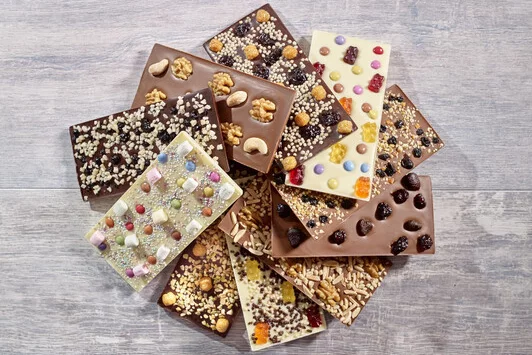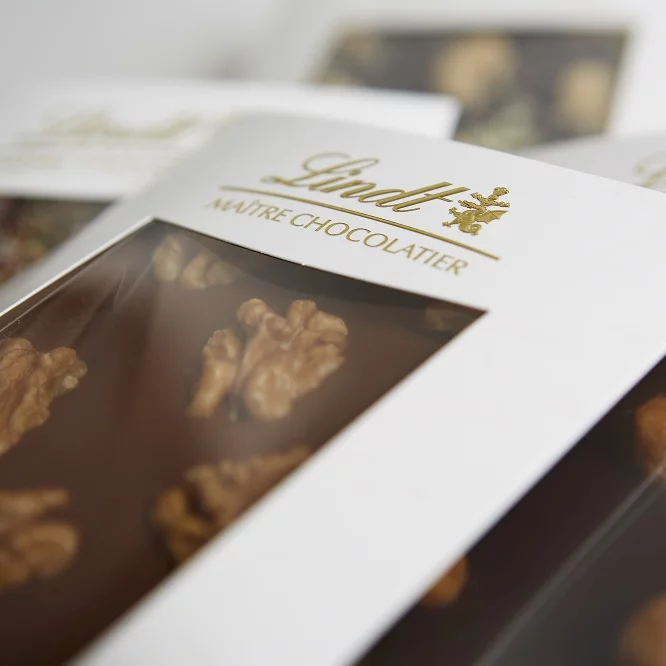Recipe for chocolate cake
Who can resist chocolate cake? Hardly anyone! And that's exactly why we have a recipe from the Chocolate Museum for you today that is not only incredibly delicious, but also very easy to prepare.

Not all chocolate is the same. You can't just mix anything made from cocoa and sugar and then sell it as chocolate. Especially as there are big differences here: When do we talk about whole milk, when do we talk about dark, fine or white chocolate? Questions like these are regulated by the Cocoa Ordinance. Yes, you heard that right. There is a European directive on chocolate. Germans are always said to be sticklers for rules, aren't they? The Cocoa Ordinance comes in handy here.
The Cocoa Ordinance, which came into force in Germany on July 5, 2017, transposes the very unwieldy-sounding directive on "cocoa and chocolate products intended for human consumption" from the European Parliament and European Council into German law. In short, it clearly regulates the minimum requirements that my chocolate must meet.
For many chocolate products, a minimum content of cocoa solids, cocoa butter or milk solids is specified. Of course, more is always permitted, but the minimum content must be adhered to. Cocoa butter, i.e. the fat from the cocoa bean, must be contained in all chocolates. It is one of the most expensive vegetable fats. Therefore, up to five percent may be replaced by other, cheaper vegetable fats. Another prescribed ingredient is sugar. Sugar-free "chocolate" is therefore not legally possible. And must be sold under a different product name.
Chocolate must consist of at least 35 percent cocoa solids. The packaging may only say chocolate if it contains the minimum percentage. If an additional quality designation (e.g. fine, dark, ...) is used, it must contain at least 43 percent cocoa solids.
Milk chocolate must contain at least 25 percent cocoa solids and at least 14 percent milk solids. Cow's milk, buffalo milk, sheep's milk, goat's milk, donkey's milk, camel's milk, mare's milk and yak's milk may be used. Chocolates with milk substitutes such as oat milk may not be sold under the name. Vegan "milk chocolate" is therefore referred to as a "cocoa product" in the shops. If an additional quality designation (e.g. milk chocolate) is used, it must contain at least 30 percent cocoa solids and 18 percent milk solids.
In addition to sugar, white chocolate must contain at least 20 percent cocoa butter and 14 percent milk solids.
Dark chocolate is not regulated in the Cocoa Ordinance. Nevertheless, guidelines apply here in accordance with "commercial practice". This is referred to as the "generally accepted trade practice". According to this, dark or semi-bitter chocolate should contain at least 50 percent cocoa solids. Dark chocolate should contain at least 60 percent cocoa solids.

All the ingredients we have mentioned are of course also available here at the Chocolate Museum. Because in the chocolate atelier of the glass chocolate factory, you can put together your own chocolate bar. There are no limits to your imagination here. Whether milk, dark or bitter chocolate, put together your perfect favorite chocolate and choose from a variety of toppings. Our Maîtres Chocolatier will prepare the chocolate bar of your choice for you! After around 45 minutes, your personal chocolate bar will be ready for collection. As a special highlight, you can customize your bar with a personal message or a name.
And believe us: we've already seen the craziest chocolate creations. Maybe you can go one better and create your own personal and crazy chocolate bar.